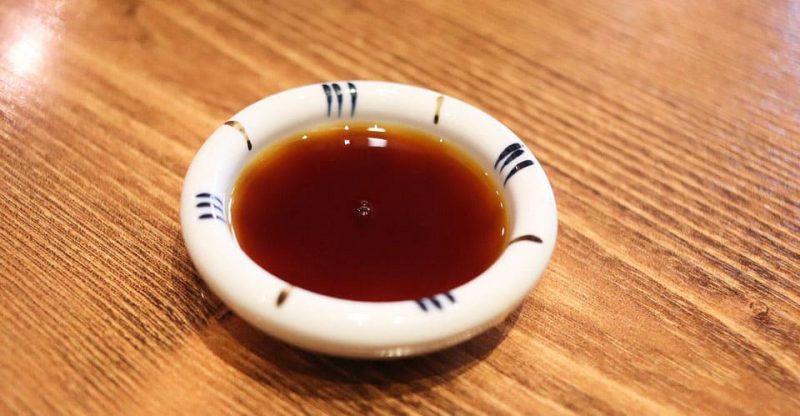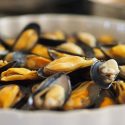What is Hydrolyzed Soy Protein or HVP: Uses, Safety and Side Effects

What is it | Uses | Safety | Side effects | FAQs
Hydrolyzed soy protein, a protein hydrolysate used as a natural flavor enhancer in food. It is the most used hydrolyzed vegetable protein (HVP) in the market. It is usually listed as an ingredient on the soy sauce label. Have you ever wondered what it is, what it is used for, is it gluten free, what’s the correlation with MSG?
What is Hydrolyzed Soy Protein?
It is a yellow to brown powder, with the taste of salty and umami, CAS Number 68607-88-5. Also known as protein hydrolyzates, soya or hydrolysed soya protein.
Definition
According to the Commission of the European Union, it is obtained by acidic, alkaline, or enzymatic hydrolysis of soya composed primarily of amino acids, peptides, and proteins. It may contain impurities consisting chiefly of carbohydrates and lipids along with smaller quantities of miscellaneous organic substances of biological origin. (1)
- Purposes in food?
- Where does its umami flavor come from?
- Manufacturing process?
- Does it Contain MSG?
What is Hydrolyzed Soy Protein Used for in Food?
The following are 3 purposes of using this ingredient or HVP in food:
- Enhance the deliciousness of the food
- Increase the nutrition of food, as it has 8 essential amino acids that are indispensable to the human body, as well as other amino acids.
- Suppress the bad flavor in food
Why Hydrolyzed Soy Protein has an Umami Flavor?
It is the free amino acids in HVP that provide the umami flavor.
Glutamic acid and aspartic acid have a taste of umami; glycine, threonine, alanine and serine have a sweet taste.
So HVP is often used as condiments, and can also be used as flavor enhancers in soy sauce, soups, meat products and snack foods.
How is Hydrolyzed Soy Protein made?
The acid hydrolysis process was introduced in hydrolyzed corn protein, generally including 4 steps, hydrolysis (HCL), neutralization (NaOH), filtration and ripening. Here briefly present the enzymatically hydrolyzed method.
Soy protein is enzymatically hydrolyzed to shortened amino acid chain or free amino acid by proteases. Then through filtration, concentration and spray drying.
Since no salt is formed during the enzyme hydrolysis, so in this way the sodium is reduced compared with the acid hydrolysis process.
Composition
| Items | Specification |
| Total Nitrogen | Min 4.0% |
| Amino Nitrogen | Min 2.5% |
| Salt | Max 42% |
| Moisture | Max 7.0% |
| Ash | Max 50% |
| 3-Chloro-1,2-Propanediol (3-MCPD) | Max 1.0 ppm |
Does it Contain MSG And How Much MSG in it?
It has naturally occurring glutamic acid and may contain 10%-30% MSG. (2)
What are the Uses of Hydrolyzed Soy Protein?
It is widely used as a seasoning and flavour enhancer in processed savoury food. Together with hydrolyzed corn protein, they’re the common hydrolyzed vegetable protein used in food. Also, it can be used in personal care products.
Food
HVP can be used in a wide range of applications that require flavor. Generally, its uses cover snack food, sauce, canned food, processing meat and convenient products.
Snack Food
HVP can enhance the delicious flavor of seafood and cover up the unpleasant flavor of seafood in shrimp fillets, fish fillets, shrimp balls, puffed snacks, biscuits, etc.
Sauce
It can be used for convenient soup sauce package, soy sauce, gravy, seafood sauce, spicy sauce, vinegar, canned soup, etc. to improve the umami taste and produce meat flavor effect.
Canned Food
It is used to increase the meat effects and remove fishy order in canned food like pork, chicken, preserved food, sardine and other seafoods.
Processing Meat
The uses of HVP in sausages, beef, ham, dried meat and fish to intensify the natural taste of the meat, improve the flavor, and reduce production costs.
Convenient Products
It can be added to soups, dishes, and sauces of instant noodles, rice, and other convenient foods to enhance the freshness and flavor to make it more delicious when eating.
Cosmetics
Per the “European Commission database for information on cosmetic substances and ingredients”, it can function as an antistatic, hair conditioning, humectant and skin conditioning in cosmetic and personal care products. (3)
According to the 2015 Voluntary Cosmetic Registration Program (VCRP) data, a total number of 862 cosmetic products contain with it and about half of them are the non-coloring hair products. (4)
The following products may contain with it:
- Bath, Shower & Soaps
- Shampoos
- Body care
- Skin care
- Hair Conditioners
- Shaving / Hair Removal
Is Hydrolyzed Soy Protein Safe to Eat?
Yes, its safety used as a food additive has been approved by the U.S. Food and Drug Administration (FDA). Plant protein products are approved by the FDA 21CFR§170.3.
What are the Possible Health Risks?
It is common that sometimes consumers have questions whether hydrolyzed soy protein or HVP is bad for our health and what are the side effects. The possible side effects lie on MSG and 3-MCPD.
MSG
As HVP contains MSG so MSG symptom complex is a possible side effect for people allergic to it.
3-MCPD
3‐MCPD (3-monochloropropane-1,2-diol or 3-chloropropane-1,2-diol) is also known as chloropropanols. It has been reported to be carcinogenic, nephrotoxic, and reproductively toxic.
It is formed in the production of acid-HVP, which needed to heat at high temperatures for hours. It is the by-product by the reaction of the lipids in the soy protein with chloride.
3-MCPD is found in soy sauce and other related products with added acid-HVP while the naturally fermented soy sauce almost without it.
Frequently asked questions
Is it Natural or Artificial?
Yes, it is a natural flavor enhancer as it meets the FDA’s definition of natural flavor or natural flavoring. (5)
Is it Halal?
Yes, it is halal. And we can find several suppliers certificated with MUI halal.
Is it Kosher?
Yes, it is kosher pareve. It has met all the “kashruth” requirements and can be certified as kosher.
Is it Gluten free?
Yes, it is without gluten according to FDA that it does not contain wheat, rye, barley, or crossbreeds of these grains.
Is it Vegan?
Yes, it is vegan. Raw materials and the manufacturing process without the use of animal-based products. And suitable for the diet of vegetarians.
What Are the Names of HVP in the Food label?
According to FDA’s requirements for specific non-standardized foods, the common or usual name of a protein hydrolysate shall be specific to the ingredient and shall include the identity of the food source from which the protein was derived.
So the name “hydrolyzed vegetable protein” is not acceptable because they do not identify the food source of the protein.
And you’ll find HVP in the name of “hydrolyzed wheat protein” “hydrolyzed soy protein” or “hydrolyzed corn protein”
If I’m Sensitive to MSG, should I Avoid HVP?
Yes, as it may contain 10-30% MSG, so people who are sensitive to MSG should avoid HVP. If you’re not sure what food additives belong to it, be attentive to the food label that containing the word “hydrolyzed.”
Conclusion
Now you may have a knowledge of the flavor enhancer – Hydrolyzed soy protein, from the following aspects:
- Manufacturing process
- Uses and purposes in food
- Safety
- Side effects
- Common FAQs: MSG content in it, is it vegan, gluten free and so on.
What do you think of this ingredient? Let me know in the comments.



I know I’m not allergic to msg because accent doesn’t harm me neither does regular soy but processed soy causes me heart arrhythmias breathing difficulties and visual disturbances and of course dizziness.
What are the minerals present in HVP (soy) in the percentage scale?
The answer to “Is it safe to eat?” is that it is approved by the FDA?!? LOL. The FDA is run by former and future food industry executives. Surely no one still believes the FDA has consumer health interests at the forefront of their thinking . . .
Complete poison.
I googled this because since I recently had to switch my two cats to a prescription hypoallergenic kibble that contains hydrolyzed soy protein and they seem to be doing well and love the taste…I wondered if I could eat something similar since I’ve been food allergy tested and I reacted to soy. I’d love to be a vegan and I hate eating meat so I’d love to be able to eat the hydrolyzed soy. The vets say that hydrolyzed proteins are broken down into such small segments that your pet’s immune system won’t react to them. But after reading all these articles about the MSG and other potential contaminants, I’m not sure I want to eat it, or want my cats eating it, either. The MSG also explains why my cats love the kibble.
I can find another hypoallergenic kibble that has hydrolyzed chicken and doesn’t have any veggie proteins, so that might work, but now I wonder about ANY hydrolyzed proteins at all. The process of hydrolyzation uses all kinds of chemicals and I don’t want that in my food or my cats’ food. What are the people and pets with food allergies supposed to do now?